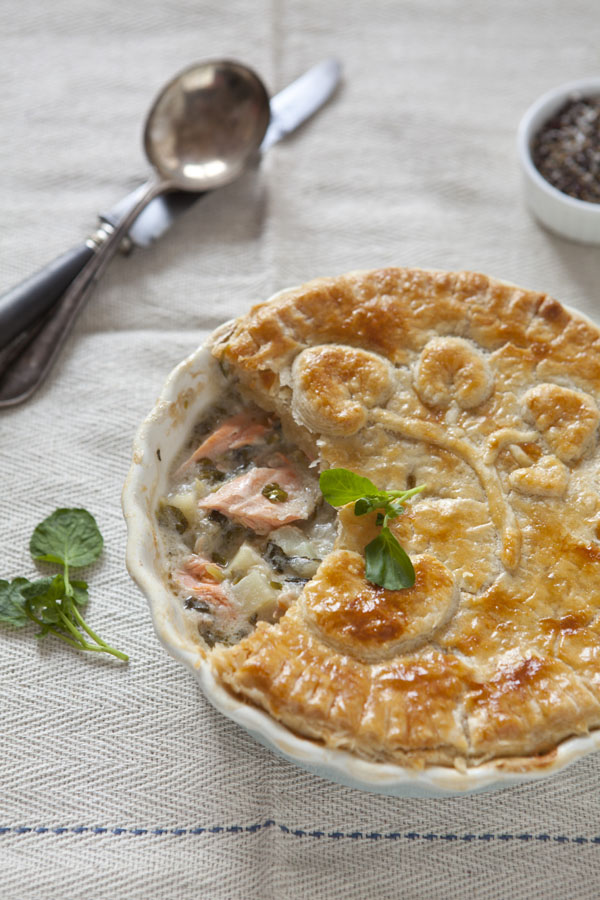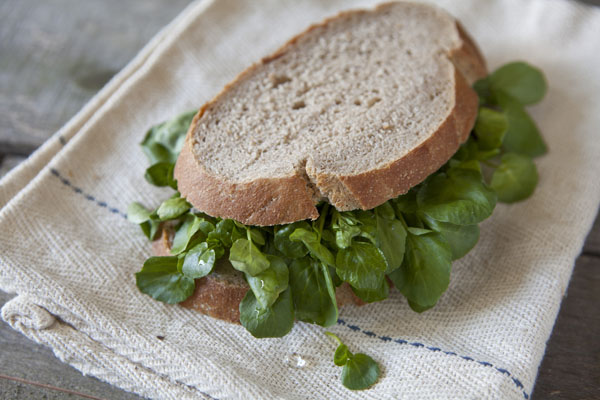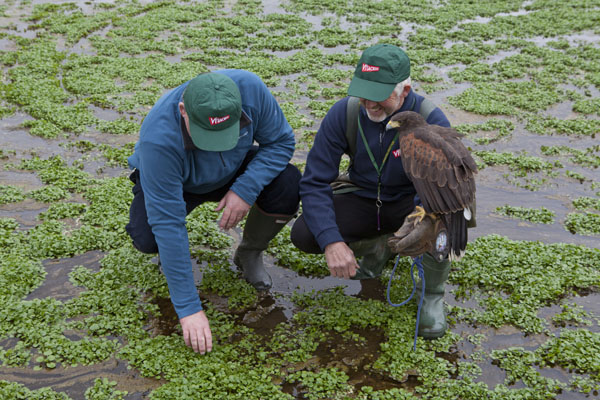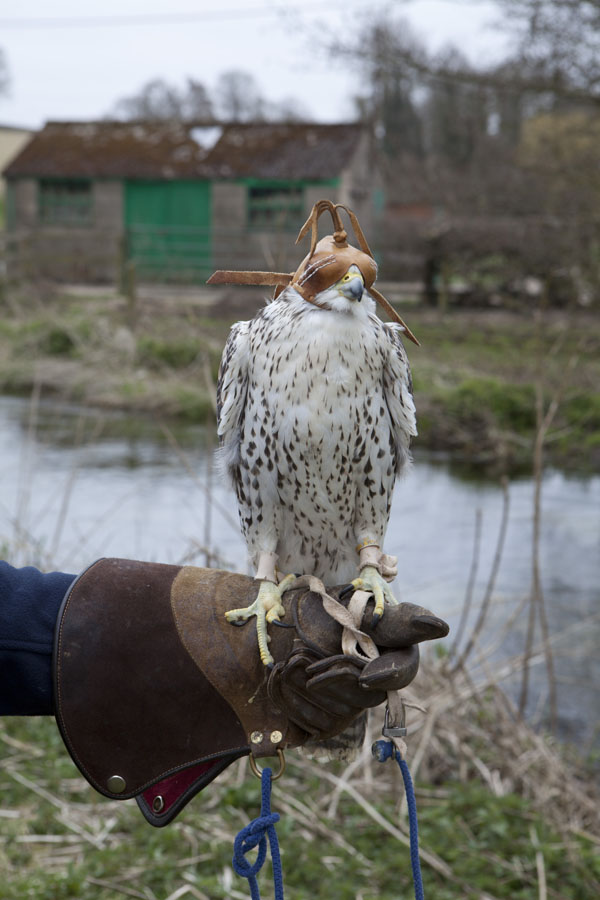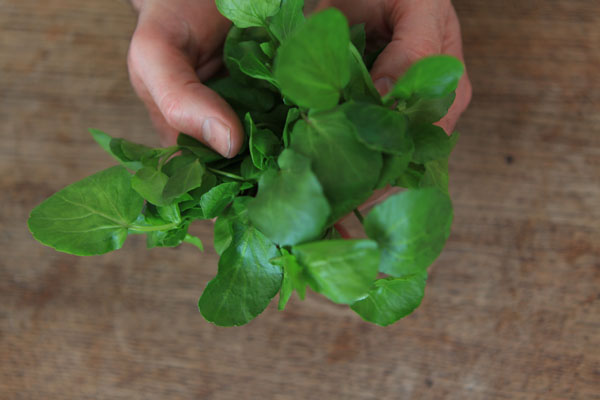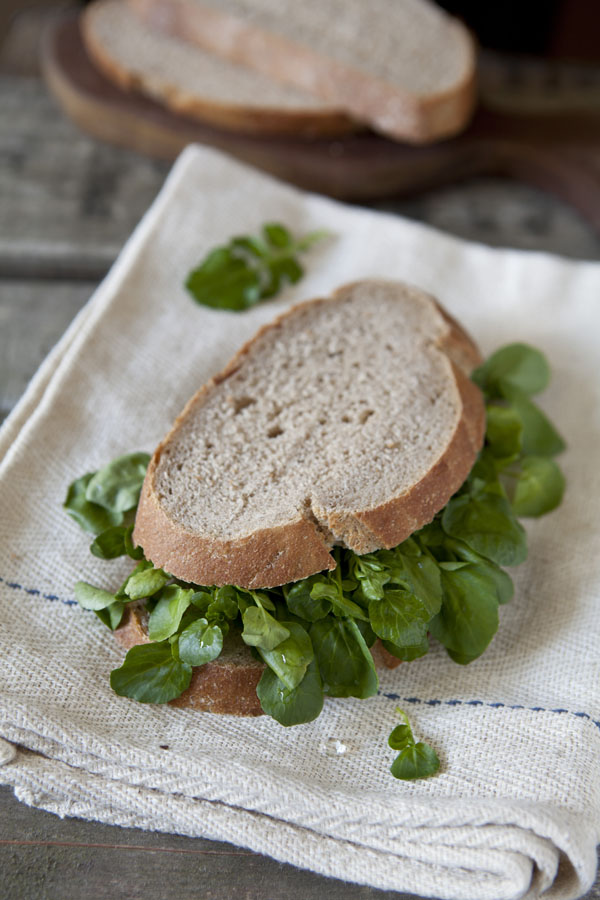The post Watercress and Trout Pie – Fit for a Watercress Queen appeared first on Miss Foodwise.
]]>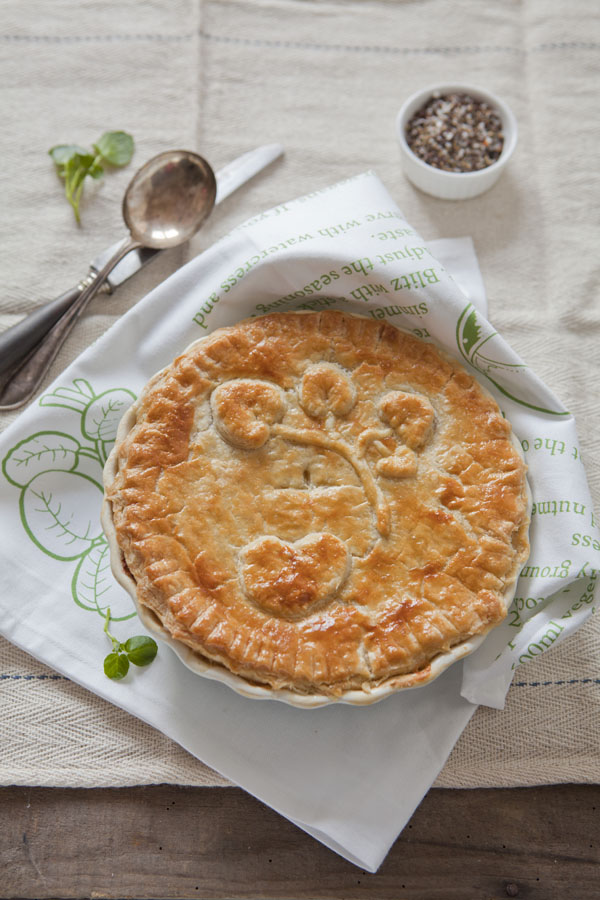
Let me tell you a story about a strong independent woman, a working class woman who became one of the most iconic figures in British food history. Her name was Eliza James and she was called ‘The Watercress Queen’.
In the late 1800, the little Eliza went from factory to factory in Birmingham with her bunches of wild watercress. As ‘the poor man’s bread‘ was so popular with the working class she soon started to sell larger and larger quantities. She worked her way up and moved her business to London where she soon became the favoured supplier of nearly all the London restaurants and hotels. She was able to acquire watercress farms in Hampshire and Surrey making her the biggest owner of watercress farms in Europe. But even when she became part of a well-to-do class, she remained to work at her Covent Garden stall for over 50 years.
Steve – who you might remember from last weeks post – explained that Eliza founded the James & Son company and trade marked the name Vitacress, the name Vitacress was then sold on to Malcolm Isaac who founded Vitacress Salads which is the name of the company today. Eliza’s Hampshire farms are still producing watercress to this day and are still a part of Vitacress. The farm I visited was one of the original farms and made me think about Eliza James and her hard work. I think she deserved her title and isn’t it just one of the most romantic stories of a working class woman trying to build an emporium out of watercress, to do well by herself and her family.
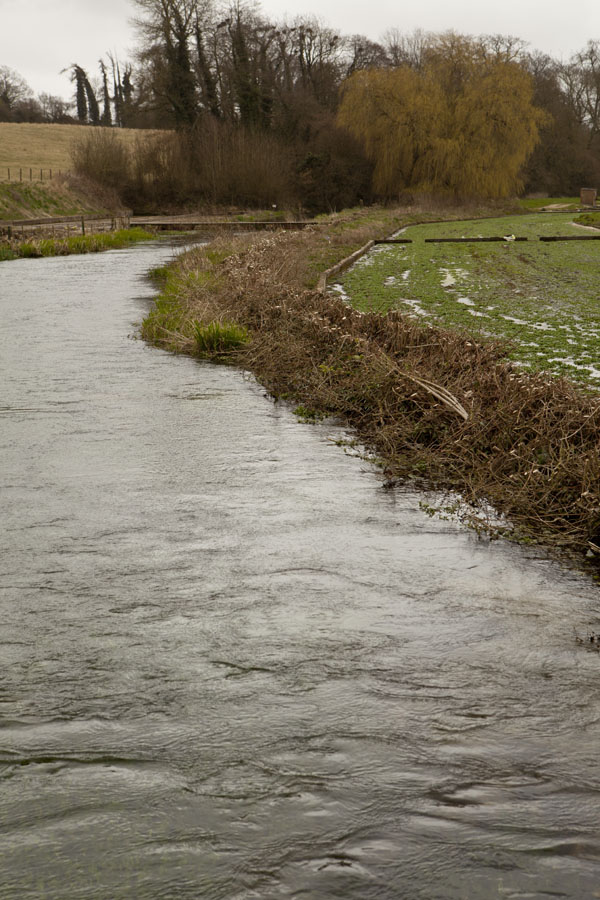 |
| The stream that feeds the watercress beds |
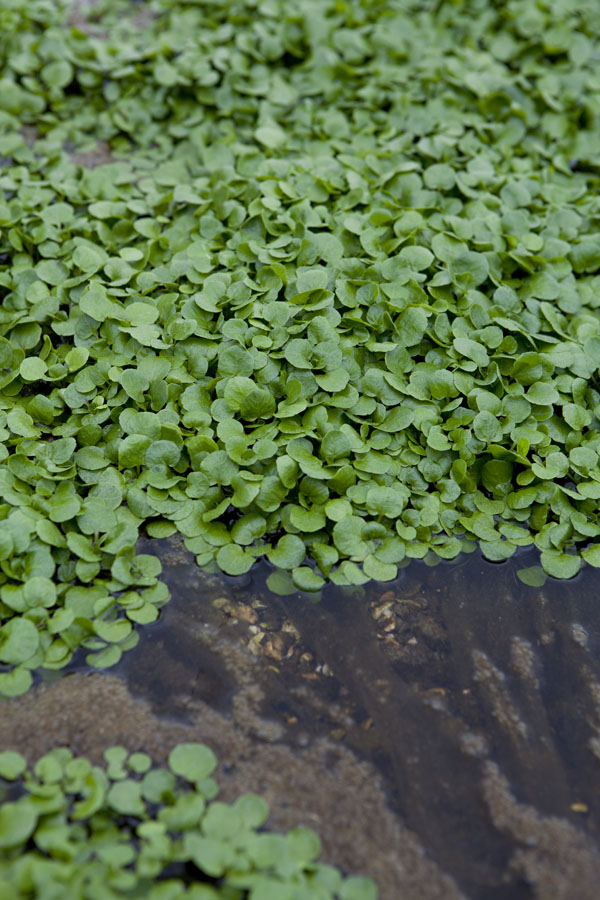 |
| Baby cress |
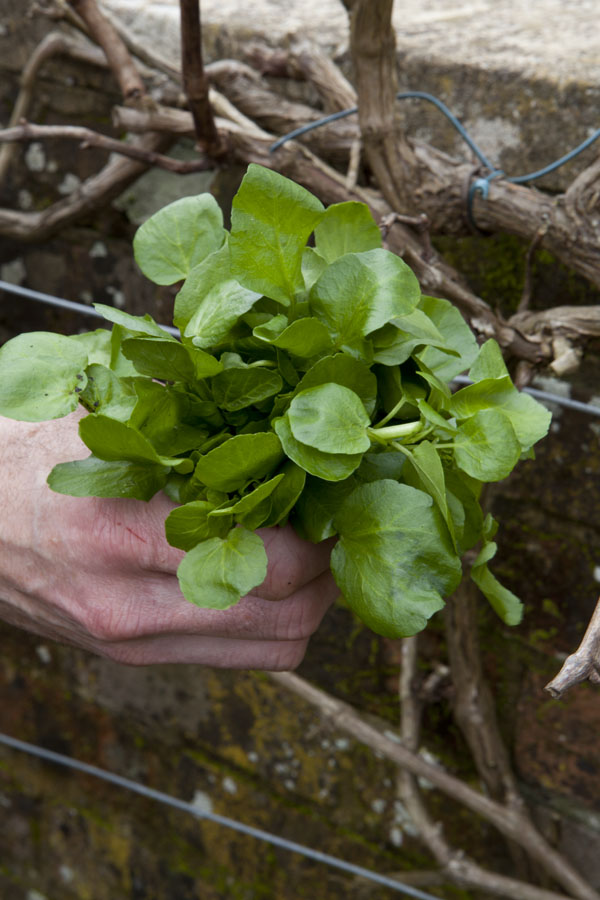 |
| Steve and his Poor Man’s bread from previous post |
As promised earlier this week here I am with my watercress and trout pie. Spring has been dreadfully cold and rainy and although I am longing for crisp green salads a pie is now very much needed to warm the spirits.
With my last bit of watercress from the farm in Hampshire I opted to bake a silky smooth fish pie. The river that feeds the watercress beds in Hampshire is full of brown trout so when I was at my fishmonger I opted for trout. With my only option being Steelhead trout today, the meat resembling more that of a salmon though less strong tasting and more delicate. I don’t care for salmon at all and avoid it where I can, unless cured, I do like salmon cured..
Water is so very important to watercress, it has to be clean spring water. The watercress leaves and stalks seem to be holding the water tightly, hanging on to all the goodness is has to offer.
Thank you Steve for showing me around, it was lovely meeting you!
What do you need
For the filling
- 1 teaspoon butter / 1 teaspoon olive oil
- 2 small celery sticks cut into small cubes
- 1 shallot cut finely
- 25 ml white wine
- Roux, enough to bind the sauce: see how you make it on this post >
- 400 ml water
- 1 large handful of fresh watercress chopped
- 2 trout filets or salmon if you rather use thatpotato 1 cup of 1 cm cubes
For the Rough puff pastry
- 225 g plain flour
- 1/4 teaspoon of sea salt
- 125 g unsalted butter in small cubes, fridge cold
- 1/2 teaspoon lemon juice
- about 125 ml ice cold water
For the pastry
- Sift the flour and salt into a bowl
- Add the cubes of cold butter and stir using a round bladed knife until all the butter is covered in the flour – do not break up the pieces of butter at this point
- Add the lemon juice and the water, one tablespoon at a time (you might not need it all) to bind the mixture into a lumpy dough with a wooden spoon or spatula, if the dough is too wet add some flour
- Turn the dough out on a clean lightly floured work surface and shape it gently into a brick, do not overwork the dough with your hands as it needs to stay cold
- Use a floured rolling pin to roll out the dough to a rectangle from about 5 mm thick
- Fold the dough in 3 by folding the bottom third up to cover the middle part of the dough and the top part you should fold down to cover the other 2 folded parts.
- Seal the edges firmly by pressing them down
- Wrap in cling film and put in the fridge for 15 min
- Take the dough out of the fridge and place it on a floured work surface, turn the dough so you can now do the same folding routine but in the other direction
- Repeat this process two more times so you have folded the dough in different directions 4 times
- Chill for 30 min before using or while you prepare the filling
For the filling
- Melt the butter and the olive oil in a pan big enough so your trout fillets can fit in nicely.
- Soften the onion and the celery for 5 minutes and add the wine, let it simmer for 5 minutes
- Pour in the water and bring to a gentle boil, leave to simmer for 5 minutes
- Gently place the trout fillets in the saucepan, make sure they are both covered with the liquid
- Let it simmer for 15 minutes until flaky but not completely done.
- Turn down the heat and remove the trout, put on a plate and cover with tinfoil to keep warm.
- Transfer the liquid to a deeper saucepan and bring to the boil
- Add the roux and cook until thickened
- If the sauce is too liquid, add more roux if you have some left or let it reduce on a medium fire while stirring
- Taste your sauce and add salt and pepper to taste.
- Now mix the sauce for 1 minute using a hand mixer with a chopping knife appliance
- Blanche the potato cubes briefly, they should still be quite rare
- Chop the watercress (with stalks) roughly
- Butter your pie dish and place in the blanched potato cubes and flake over the trout fillets, sprinkle over a few leaves of chopped watercress.
- Add the rest of the watercress to the sauce and simmer for a further minute
- Pour the sauce over the trout and potato and mix gently with a spoon so the sauce is evenly divided
- Remove the pastry from the fridge and roll it out on a floured surface until around 2cm larger than the pie dish.
- Brush the edge of the dish with beaten egg and lay the pastry over the filling.
- Trim off any excess pastry using a sharp knife, and knock up the edges with the back of a knife to create indentations.
- At this point you can decorate your pie with the leftover dough
- Brush lightly with beaten egg
- Bake your pie in a preheated oven at 200°c for about 25 minutes or until the pastry is golden brown.
You might also like
Stout, beef and oyster pie – poverty and oysters
The Poor man’s bread – a day at a watercress farm
The post Watercress and Trout Pie – Fit for a Watercress Queen appeared first on Miss Foodwise.
]]>The post British watercress and the ‘Poor Man’s bread’ appeared first on Miss Foodwise.
]]>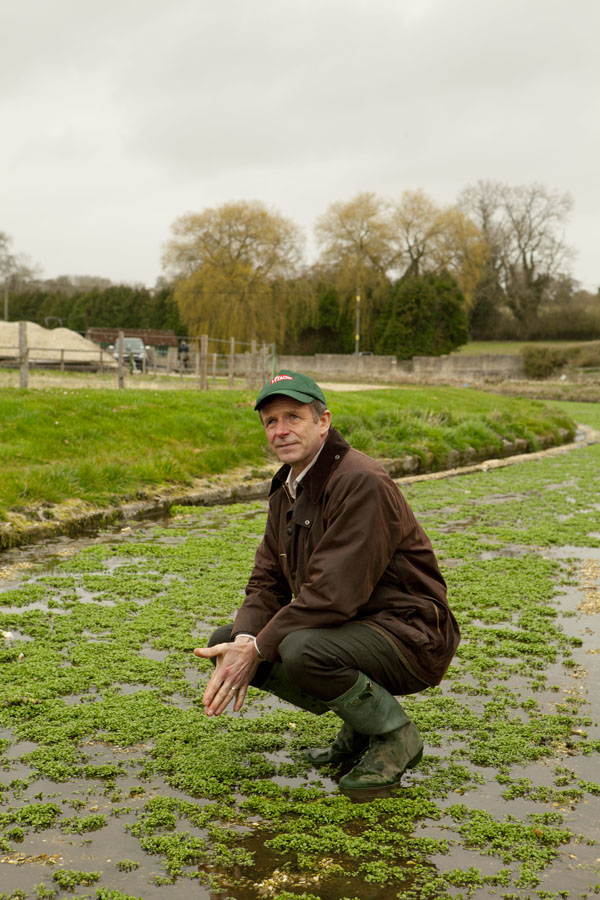
‘British weather is perfect for watercress’ the words of Steve … my host at the watercress farm in Hampshire.
Britain is one of the few countries to grow watercress and has been for hundreds of years. As far back as the 1600’s and most likely even earlier it was foraged in the wild where it grew in streams and rivers but as from 1808 it was first commercially cultivated by William Bradbery, along the River Ebbsfleet in Kent.
The success of the watercress trade is very much entwined with the British railways. In 1865 the ‘Mid-Hants Railway’ or Watercress Line was opened, it connected Alresford to London giving Hampshire watercress growers the opportunity to get their crop fresh to the London markets. The delicate leaves would be picked by hand by the men and tied into bunches by the women to be placed in wicker baskets for the transport.
At London’s Covent Garden watercress would be sold by street vendors who often were children. The bunches of watercress were said to have been formed into posies and eaten like that for breakfast straight away or if you were lucky to be able to afford a loaf, between two slices of bread. In Victorian Britain it was called ‘the poor man’s bread’, it provided the working class with a good portion of nutrition for the day and became one of the first foods for on-the-go.
The Watercress Line declined during the years of the first and second world wars and gave her final blow to watercress growers in the 1960’s with the closure of the line.
Now a flourishing industry, watercress is gaining popularity again and Alresford even has a Watercress festival in may.
We now have Watercress all year round but it used to be a hardy winter crop, feeding off spring water that has a constant temperature of around 10° C, watercress is unaffected by frost.
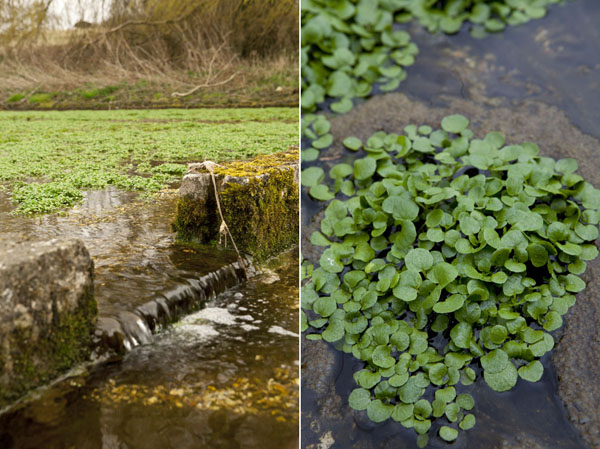 |
| The clear water feeding the cress |
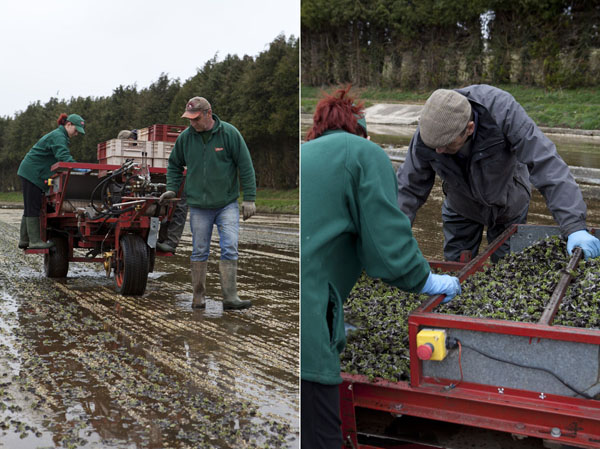 |
| Planting seedlings |
The beds on this Hampshire farm are still the original ones from the 1800’s, they are cleared each year to keep the crop healthy and follow the natural line of the river benefiting of the natural spring water. Hawks and Falcons are used to chase away stealing pigeons and bats are set free to clean the beds of small insects that could affect the health of the crop. They very much work together with nature, preserving the wildlife that likes to reside around watercress and to keep the beds chemical free.
University
students are at the site to study this method as was Steve at one time
in his life. Steve has a PhD in the nutritional physiology of watercress
and his course was part funded by the watercress industry. He tells me watercress contains more vitamin c than oranges, more iron than spinach and more calcium than milk.
He himself swears by eating a few bunches, raw in his hand like the ‘Poor man’s bread’ every day and has done for thirty years.
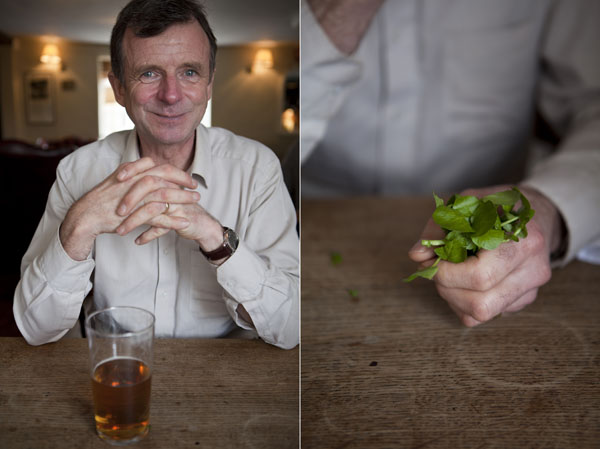 |
| Steve with his ‘Poor man’s bread’ |
The
watercress from Hampshire does taste perfectly peppery filling your
mouth and nose with mustardy warmth and then refreshing it with the
juicy stalks.
It has been a favorite on my plate for quite some time,
preferring it to Rocket salad. It is so versatile, like the ‘poor mans
bread’ straight out of your hand or just plain between two slices of
bread, spicing up your soups, salads and smoothies. I can’t get enough
so with my precious bunches the farm kindly gifted me I had a lovely
salad, a sarnie, an egg and a trout and watercress pie. (check back on friday for the trout and watercress pie)
Watercress from the Watercress Alliance is sold all over the UK in supermarkets and market stalls. Have a play with this brilliantly British crop and I assure you that it’s mustardy bite will not let you go in a hurry.
The Poor man’s bread
What do you need
- British watercress
- bread *optional*
Method
To make a slightly more luxurious ‘poor man’s bread’ adding actual bread, bake a loaf of bread, or buy a decent loaf from a local bakery.
Cut off a couple of slices and wrap in a tea towel.
Pick out a handsome looking, crisp bunch of British watercress at a store or farmstall. Take a walk in the countryside or if you are urban, a park. Search for a perfect spot, in the sun ideally, by a lake or a stream preferably. Have a seat and a breath in deeply, hopefully all you will smell is flowers blossoming and the sweet scent of spring grass. Unpack your slices of bread on you lab and on it place the bunch of watercress, I am not washing it.
Notice the vibrant green color before you take the first bite.
Peppery warmth will fill your nose followed by the sweetness of the bread and then the fresh juiciness of the stalks.
You will wonder why you always over complicate meals when it can be so simple. You will start to think what will go beautifully with this sarnie, some light cream cheese or just a generous spread of fresh farmhouse butter …
From now one watercress will always be on your list, because you can’t get enough.
Enjoy x
You might also like
A farmers life for me – a day at a rare breed pig farm
The post British watercress and the ‘Poor Man’s bread’ appeared first on Miss Foodwise.
]]>